How to Spot Skin Cancer

Skin cancer is by far the most common type of cancer. If you know what to look for, you can spot warning signs of skin cancer early. Finding it early, when it’s small and has not spread, makes skin cancer much easier to treat.
Some doctors and other health care professionals include skin exams as part of routine health check-ups. Many doctors also recommend that you check your own skin about once a month. Look at your skin in a well-lit room in front of a full-length mirror. Use a hand-held mirror to look at areas that are hard to see.
Use the “ABCDE rule” to look for some of the common signs of melanoma, one of the deadliest forms of skin cancer:
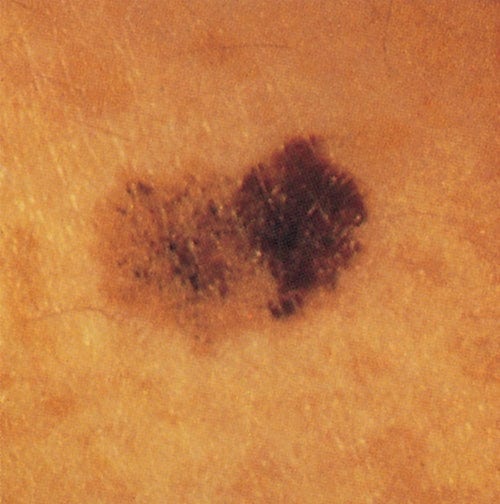
Asymmetry
One part of a mole or birthmark doesn’t match the other.
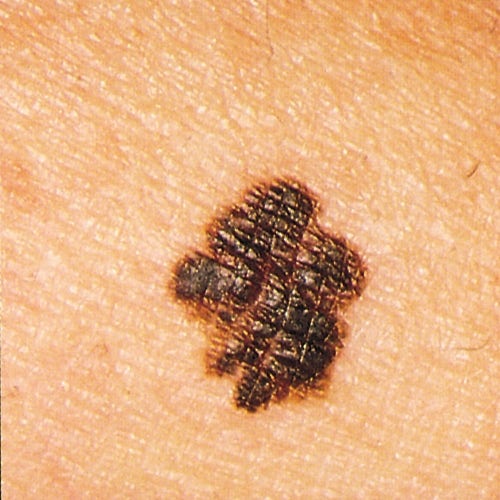
Border
The edges are irregular, ragged, notched, or blurred.
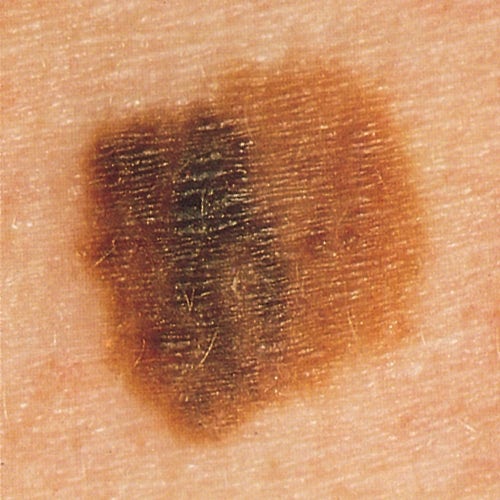
Color
The color is not the same all over and may include shades of brown or black, sometimes with patches of pink, red, white, or blue.
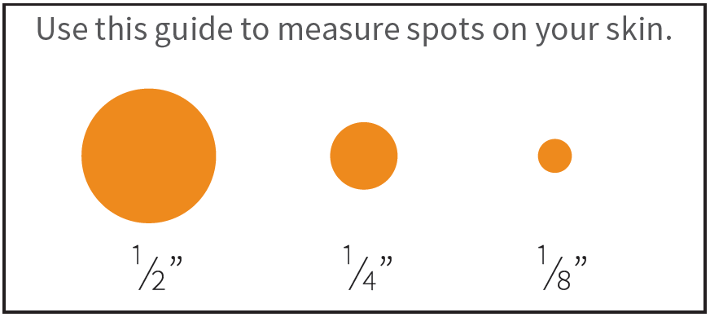
Diameter
The spot is larger than ¼ inch across – about the size of a pencil eraser – although melanomas can sometimes be smaller than this.
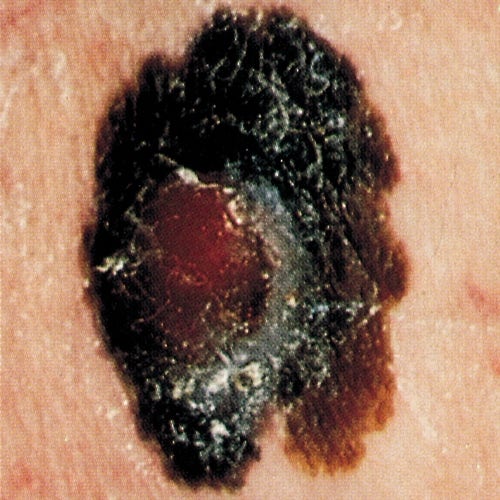
Evolving
The mole is changing in size, shape, or color.
Basal and squamous cell skin cancers are more common than melanomas, but they are usually very treatable.
Both basal cell carcinomas and squamous cell carcinomas, or cancers, usually grow on parts of the body that get the most sun, such as the face, head, and neck. But they can show up anywhere.
Basal cell carcinomas: what to look for:
- Flat, firm, pale or yellow areas, similar to a scar
- Raised reddish patches that might be itchy
- Small translucent, shiny, pearly bumps that are pink or red and which might have blue, brown, or black areas
- Pink growths with raised edges and a lower area in their center, which might have abnormal blood vessels spreading out like the spokes of a wheel
- Open sores (that may have oozing or crusted areas) and which don’t heal, or heal and then come back
Squamous cell carcinomas: what to look for:
- Rough or scaly red patches, which might crust or bleed
- Raised growths or lumps, sometimes with a lower area in the center
- Open sores (that may have oozing or crusted areas) and which don’t heal, or heal and then come back
- Wart-like growths
Not all skin cancers look like these descriptions, though. Point out anything you’re concerned about to your doctor, including:
- Any new spots
- Any spot that doesn’t look like others on your body
- Any sore that doesn’t heal
- Redness or new swelling beyond the border of a mole
- Color that spreads from the border of a spot into surrounding skin
- Itching, pain, or tenderness in an area that doesn't go away or goes away then comes back
- Changes in the surface of a mole: oozing, scaliness, bleeding, or the appearance of a lump or bump
- Reviewed by
- Helpful resources

The American Cancer Society medical and editorial content team
Our team is made up of doctors and oncology certified nurses with deep knowledge of cancer care as well as editors and translators with extensive experience in medical writing.
American Cancer Society news stories are copyrighted material and are not intended to be used as press releases. For reprint requests, please see our Content Usage Policy.




